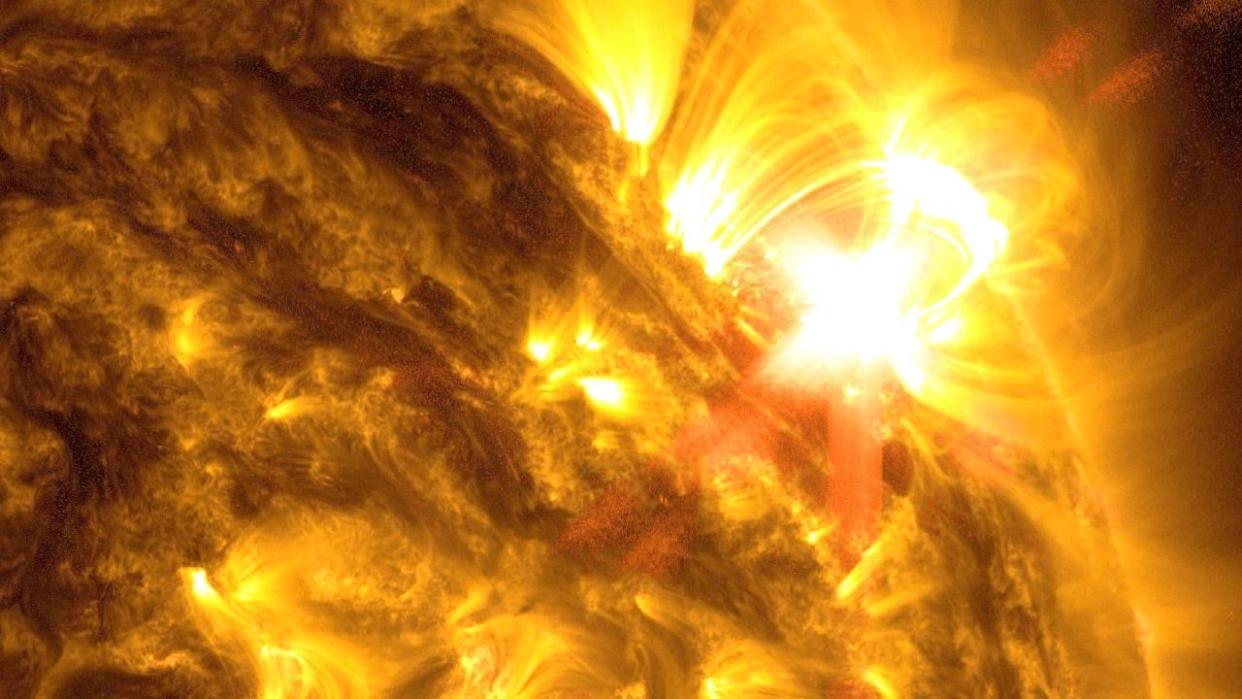Solar storm watch: Why we may be able to see the northern lights from South Florida
A very rare geomagnetic storm watch was issued late Thursday by the National Oceanic and Atmospheric Administration’s Space Weather Prediction Center for a barrage of coronal mass ejections from the sun that could last through the weekend, and possibly into early next week.
Space weather forecasters are concerned enough about impacts to power grids and radio and satellite operations from the volley of explosive solar magnetic fields that they are working with federal emergency officials to mitigate any disruptions.
Here are some things to know about coronal mass ejections:
What is a coronal mass ejection?
A coronal mass ejection is a large discharge of plasma and magnetic field from the sun’s corona, or outermost part of the sun’s atmosphere. The corona is usually hidden by the sun’s bright light, but it can be seen as an ethereal glow around the sun during a total solar eclipse. According to NOAA, a coronal mass ejection, or CME, can send out billions of tons of coronal material and an embedded magnetic field that can reach the Earth as quickly as 15 to 18 hours or take several days.
What is a solar flare?

Solar flares are bursts of atmospheric radiation seen as brilliant flashes of light that typically occur near sunspots. The strongest solar flares often occur near the same time or trigger coronal mass ejections. The light from solar flares can take eight minutes to reach Earth. EarthSky.org compares a solar flare to a muzzle flash from a cannon, while a coronal mass ejection is the cannonball.
How does a coronal mass ejection affect Earth?
The cloud of magnetized particles from a coronal mass ejection can disrupt Earth’s magnetic fields, which is partly how the aurora, or northern lights, are created. CMEs can also corrupt GPS signals, radio waves and create electrical currents in infrastructure such as pipelines, utility grids and railroad tracks.
How does a solar flare affect Earth?
Solar flares are less damaging than what can occur with a CME. Most solar flares are too feeble to cause much disruption to Earth’s technologies.
What is the aurora, or northern lights?
The aurora, or northern lights, are colorful curtains that shimmer in the night sky when charged particles from the sun come hurtling at Earth’s atmosphere. When the particles hit atoms in the atmosphere it causes reactions in the nucleus of the atoms and the surrounding electrons, which produces the light. Earth’s magnetic field directs the particles toward its poles, where the northern, and southern lights, can be seen.
Could South Florida see the northern lights?
With very strong geomagnetic storms, the aurora, or northern lights, can be seen at lower latitudes. Space weather forecasters said a geomagnetic storm that erupted the week of May 5 could cause the aurora to be seen as far south as Alabama. Because cell phone cameras are more sensitive to light than the human eye, scientists said photos taken of the night sky as far south as South Florida may pick up the aurora.
This article originally appeared on Palm Beach Post: What is a solar flare? Rare geomagnetic storm watch issued by NOAA
